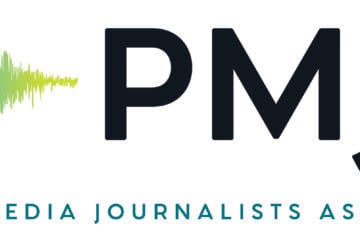Public television spectrum valued at up to $6.8 billion in FCC auction
A recently completed computer simulation commissioned by Public Media Company from CRA International Inc. predicts that television spectrum held by public TV stations could be valued at as much as $6.8 billion in the FCC auction taking place this year.
Actual outcomes of the auction will vary based upon which stations participate, as well as the amount of broadcast spectrum the FCC decides to purchase, or “clear,” from stations in each market.
The computer simulation uses information publicly released by the FCC and proprietary models developed by CRA to estimate actual potential auction prices for each television station in the country. Under its agreement with CRA, PMC is able to offer projected auction prices to all public television stations. The reports that PMC provides include projected prices for all of the stations in the client station’s designated market area.
These simulations were done using a more realistic clearance target than the FCC used for its opening bid prices, which were for full relinquishments of UHF stations only. In its calculations, the commission assumed that the largest PBS station in each market would not participate, and it did not consider price reductions from those broadcasters that opt for channel sharing or moves to VHF signals. Not all stations that choose to participate will be bought, since the FCC may not need their channels to achieve a repacking solution.
A couple of dozen stations have purchased the data for their DMAs. Public Media Company ensures that every station understands that this is just a simulation and real results may differ. After seeing the results, station leaders have found that the simulation was very helpful as they made decisions about their auction participation and the development of specific bidding strategies. With guidance from FCC counsel, Public Media Company has devised a system that allows us to continue to offer this data to stations, even during the quiet period, without violating the FCC’s non-collusion rules. We believe this information will continue to have value for stations as they refine their auction strategies between now and March 29.
National data compelling
While opening bid prices released by the FCC Nov. 12 predicted eye-popping potential windfalls for stations across the country, the simulation shows that those in the 10 largest markets will likely garner the lion’s share of public broadcasting’s projected compensation from the auction, aggregating up to 75 percent to 80 percent of the estimated $6.8 billion in value.
This $6.8 billion is what would come to public television licensees if every UHF station in the country assumed to participate was bought at its freeze level (its tentative auction ending point) for full relinquishment as projected in the CRA report. Of course, we know that’s not going to happen. Some stations have announced that they’re not participating. Other stations that do participate will choose bidding strategies that will result in less money but allow them to keep spectrum, like channel-sharing or moving to VHF. But the $6.8 billion value for all of public TV’s UHF spectrum really does underscore the high stakes for public television in the decisions that stations are considering.
Public Media Company contracted with CRA, a leading global consulting firm with a specialty in auctions, to give public broadcasters access to pertinent and affordable information about what their station might be worth in the auction. This was driven by conversations over the past year with commercial broadcasters — most of whom had acquired similar auction simulations and used them to make informed decisions and develop focused strategies.
Using publicly released information from the FCC, CRA created a software engine that is designed to mirror essential parts of the FCC’s auction system. The simulator has the capacity to estimate auction bidding conditions and potential outcomes nationwide. The system uses the same assumptions about auction participation that the FCC used in developing its own projections for opening bids. It employs a proprietary model that includes gross revenue, historical station sales data, and other estimates of station enterprise value to project stations’ reserve prices. Other factors include station ownership data and network affiliation, station interference parameters, and other general assumptions.
This analysis by CRA looked at the full relinquishment (going off the air) of UHF stations for four different clearing targets: 126 MHz, 114 MHz, 108 MHz and 84 MHz. The study could not include VHF relinquishments or moves to or within VHF.
“When we spoke to CRA, we learned that including moves to VHF in the study was not practical,” said Vincent Curren, principal of Breakthrough Public Media Consulting, who also worked with PMC on the simulation. “Trying to predict when a station might move to VHF added such complexity into the model that, if we were to do it, the cost of obtaining the simulation would have been so much that nobody in public television would have been able to afford it,” he said.
How revenue payouts vary
The study clearly shows that two critical components will determine actual auction values. One is how much spectrum the FCC ultimately decides to clear in each market, and the other is the number of stations in any particular DMA that choose to participate.
These two factors are directly related — for the FCC to achieve a relatively higher spectrum-clearing target like 114 or 126 MHz, more stations will have to participate in the auction. If relatively few stations participate, the FCC will have to adopt a lower clearing target, like 84 MHz or 108 MHz. The following chart shows the outcome of the simulations as predicted by CRA, based upon the participation assumptions that the FCC used in its own simulations.
The simulation shows that the vast majority of stations will receive compensation much lower than the opening bid prices released by the FCC. If the FCC decides to clear spectrum at levels of 108 MHz and above, stations that have potential to receive revenue close to their opening bid prices are limited to the largest 10 markets or are in close proximity to one of the largest 10 markets. This dynamic was expected, given that opening bid prices had been set based upon the highest possible clearing target of 144 MHz and reflect the FCC’s marketing effort to generate as much interest in the auction as possible. The actual compensation will be determined through the auction bidding process.
As depicted in the graphic, projected auction revenue could vary significantly depending on the FCC’s clearing target. At a clearing target of 126 MHz and 114 MHz, it appears that many stations will receive significant payouts. At 84 MHz, few stations will receive payouts. At 108 MHz, compensation levels are still significant, but not as high as 126 MHz and 114 MHz.
Former Public Television Major Market Group Executive Director Dennis Haarsager, who helped PMC analyze the data, observed, “Once you get below a clearing target of 108 MHz, the potential for television stations to realize significant auction proceeds diminishes greatly. In fact, I believe that if the FCC moves to an 84 MHz clearing target, the great majority of public television participants will drop out of the auction because the bidding will drop below their walk-away price.”
Revenue for public broadcasting: sizable but concentrated
But for public broadcasting licensees, total revenues could be significant, representing 14 percent to 21 percent of total compensation paid to all bidders — especially if the FCC clears a clearing target of above 84MHz.
114 MHz – 126 MHz: Up to $6.8 billion with 110 public TV stations participating
108 MHz: Up to $5.9 billion with 110 public TV stations participating
84 MHz: Up to $990 million with 46 public TV stations participating
While the total compensation for public broadcasting might be significant, the revenues are not distributed equally among stations. A closer look at the estimated revenues shows that the top 10 stations receiving compensation make up 75 percent to 80 percent of all compensation for public broadcasting, except for under the 126 MHz scenario, in which the top 10 stations would receive 60 percent of all revenues. The following chart shows the distribution of revenues among public television stations at 114MHz.
Impact on universal service
More than 70 DMAs receive over-the-air service from only one PBS affiliate. A number of these sole-service PBS stations could receive significant compensation if they decide to participate in the auction. If a station chooses to sell its spectrum, a community could be left without access to a local PBS broadcast.
For example, at a clearing target of 114 MHz or above, five sole-service stations are in line for compensation of more than $50 million, and an additional eight to ten stations are in line for compensation of $25 million or more if all PBS affiliates were to participate in the auction.
And this understates the actual problem. Many DMAs are served by two or more PBS stations, but the stations have little overlap because the DMA is so large. When the DMA covers a lot of area, the loss of a PBS station could cause a large area to lose over-the-air service because other PBS stations in the DMA serve other areas.
PMC believes the CRA simulation supports the concern that system leaders have been expressing since the FCC declined to protect universal service in its auction procedures, a concern recently stated again by PBS CEO Paula Kerger at the Television Critics Association’s Winter Press Tour in Pasadena, Calif. Particularly at higher clearing targets, projected auction revenues will be very tempting for many stations and their institutional licensees that provide the sole PBS service to their DMA.
The following table shows the number of PBS affiliates in single-PBS markets with a variety of compensation ranges and at the different clearing targets.
| Compensation | Number of sole-service PBS member stations | |||
|---|---|---|---|---|
| 126 MHz | 114 MHz | 108 MHz | 84 MHz | |
| $0–$1 million | 34 | 35 | 37 | 45 |
| $1 million–$10 million | 6 | 4 | 5 | 4 |
| $10 million–$25 million | 4 | 7 | 6 | 6 |
| $25 million–$50 million | 10 | 8 | 8 | 3 |
| $50 million+ | 5 | 5 | 3 | 1 |
For stations in the auction, a complex decision; proceed with caution
Stations that applied to participate in the auction by the Jan. 12 filing deadline still have very significant decisions in front of them. Between now and March 29, these stations will have to make final decisions about whether and how they will participate. Most of the FCC attorneys consulted by PMC were advising their clients to check all the boxes in the application, which gives stations that have applied the most flexibility as they finalize their plans by the FCC’s deadline.
Media consultant John Lawson of Convergence Services, Inc., has been an advocate for stations to weigh the upside of keeping spectrum in any auction decision. “We’ve advised clients to perform a ‘360’ due diligence by not only looking at the one-time payout from the auction, but also through a strategic lens,” Lawson said. “Present and future bandwidth needs, new services in public safety and education, and allowable monetizing from innovations in broadcast technology, such as ATSC 3.0, should be part of the calculation.”
Public Media Company has worked with the law firms of Wiley Rein and Garvey Schubert Barer to ensure that PMC can continue to make the results of CRA simulation available to stations during the current quiet period. To ensure compliance with anti-collusion regulations, all of the assumptions underlying the CRA simulation are based on public information — the simulation discloses no station-specific information about auction or bidding strategies. PMC has also developed a system that will allow subscribing stations to simply go to a secure online site and download their data. PMC will not answer specific questions about the data during the quiet period, since the questions a station might ask could communicate information about the bidding strategies the station is contemplating. Stations that are interested in obtaining simulation results for DMA(s) relevant to them can email spectrum@publicmedia.co.
Disclaimer: Stations reviewing national results or any DMA-specific auction projections should make independent determinations regarding the reliability of the simulation results and how to utilize the results in bidding strategies (if any). Until the FCC releases a public notice announcing the results of the auction, all stations are prohibited from communicating with other broadcasters and potential buyers of the spectrum regarding auction bids or bidding strategies. Stations should also be careful about communicating information about bids or bidding strategies with persons who can become conduits, which may include employees, lenders, consultants, advisors and even attorneys.
The simulations by CRA do not reflect and are not informed by any individual broadcaster’s bids or bidding strategies, other than the potential for including permitted disclosures about whether stations have applied or not applied to participate in the auction. The results of the CRA simulations are for educational purposes only and not intended to dictate any particular behavior or outcome in the auction. Public Media Company and CRA make no representations or warranties regarding the accuracy of the CRA simulations.
Marc Hand is the c.e.o. and co-founder of Public Media Company, a national nonprofit that fosters public media growth. As c.e.o., Marc builds strategic public media alliances, educates financial institutions on public media investments, and provides expertise on all aspects of public media transactions based on his 30-year career as a public and commercial media advisor and owner of commercial stations. Marc spent five years at the Station Resource Group helping public radio stations expand services via acquisitions, collaborations and partnerships, leading to the development of Public Media Company in 2001.
Public Media Company consultant Evran Kavlak also contributed to this article.
Related stories from Current:









